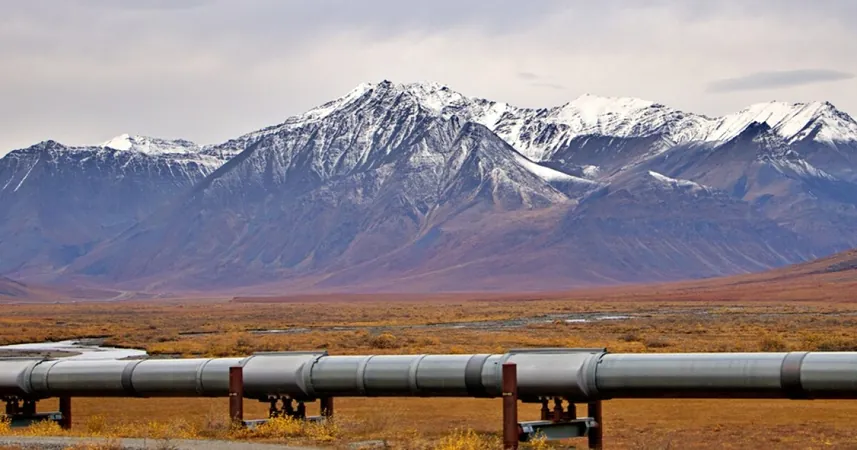
Unlocking the Secrets of Ice: How Clathrate Hydrates Could Revolutionize Pipeline Safety and Carbon Storage
2025-07-14
Author: Noah
Canadians might pride themselves on their deep familiarity with ice, but there's a hidden form that's rarely discussed: clathrate hydrates. These fascinating compounds are tiny crystalline formations of ice that have the ability to trap gases or liquids within their icy cages.
One major concern surrounding clathrate hydrates is their potential to form in natural gas pipelines, leading to disastrous explosions—a fact underscored by the catastrophic BP Deepwater Horizon incident in the Gulf of Mexico back in 2010. According to John Tse, Canada Research Chair of Materials Science at the University of Saskatchewan, understanding these hydrates is crucial for safety.
In a bid to unravel the mysteries of clathrate hydrates, Tse and his team embarked on an ambitious research project. They aimed to study the formation of these hydrates and the interactions between gas and water. However, the rapid nature of hydrate formation posed a challenge, demanding innovative techniques to slow down and observe the process.
To achieve this, Tse cooled a mix of water and tetrahydrofuran (THF) to a frigid -263°C in a vacuum. Using the advanced X-ray beamlines at the Canadian Light Source, he meticulously tracked the movement and structural changes of the molecules as he gradually raised the temperature.
His findings were groundbreaking. As the temperature climbed, THF crystallized while the ice remained amorphous. It was only at around -163°C that the THF melted, merging with the water to form clathrate hydrates, effectively capturing THF within their icy structures.
The implications of this research extend far beyond mere safety measures against pipeline explosions. Clathrate hydrates hold potential for revolutionizing natural gas transport and storage, with a single cubic foot of hydrate capable of containing up to 150 cubic feet of gas. Moreover, they could play a pivotal role in carbon capture and storage initiatives.
Tse remains hopeful that his fundamental research will inspire engineers to harness this knowledge for practical applications, paving the way for innovative technologies. "Science is all about baby steps," he remarked. "We begin with ideal conditions and gradually evolve toward practical solutions. Someone might emerge with a brilliant idea rooted in our understanding of hydrate formation."









 Brasil (PT)
Brasil (PT)
 Canada (EN)
Canada (EN)
 Chile (ES)
Chile (ES)
 Česko (CS)
Česko (CS)
 대한민국 (KO)
대한민국 (KO)
 España (ES)
España (ES)
 France (FR)
France (FR)
 Hong Kong (EN)
Hong Kong (EN)
 Italia (IT)
Italia (IT)
 日本 (JA)
日本 (JA)
 Magyarország (HU)
Magyarország (HU)
 Norge (NO)
Norge (NO)
 Polska (PL)
Polska (PL)
 Schweiz (DE)
Schweiz (DE)
 Singapore (EN)
Singapore (EN)
 Sverige (SV)
Sverige (SV)
 Suomi (FI)
Suomi (FI)
 Türkiye (TR)
Türkiye (TR)
 الإمارات العربية المتحدة (AR)
الإمارات العربية المتحدة (AR)